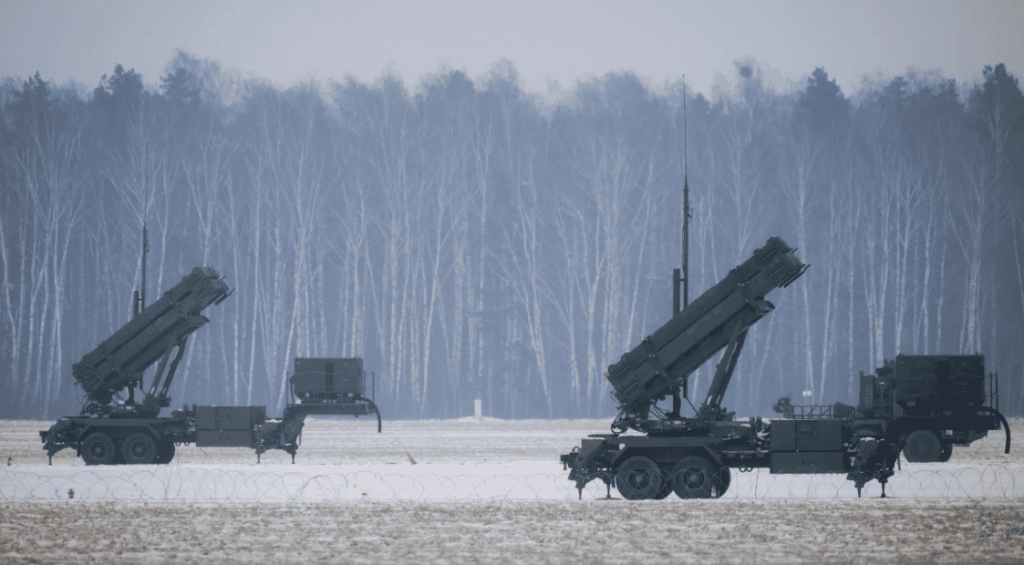The United States under the outgoing Biden administration has supported the transatlantic relationship, both through NATO and by providing support to Ukraine. At the same time, the Biden administration has generally positioned itself against European attempts to reduce reliance on foreign arms. For example, the US ambassador to NATO criticised the EU’s aim of buying more home-produced weapons 1 , as set out in the EU defence industrial strategy, proposed by the European Commission in March 2024 2 .
Now, with President Trump soon returning to office, US policy towards European security could be at a turning point. Leading figures around Trump argue that US security policy should focus on the Pacific as the US defence industrial base is too small to cater for all threat theatres 3 . Implicitly, there is thus support for the idea that Europe should become more self-sufficient in military terms. Whether this view will become US policy or whether the current policy driven by the defence industry’s interests to sell to the attractive European market will continue to dominate is to be seen.
Meanwhile, some in Europe see defence equipment purchases from the US as a strategic tool to fend off tariffs 4 . But this strategy would need sufficient capacity in the US military base and timely delivery or, rather than procuring modern equipment fit for its eastern flank, the EU would risk overpaying for late and second-rate products, entrenching dependence through long-term contracts for maintenance and supply.
We assessed non-US demand for US military industrial capacity by analysing US foreign military sales (FMS), compiling a database from US Defense Security Cooperation Agency data, as reported by the Pentagon 5 . We show that large shares of US-produced weapons, such as shells for tanks and artillery and air defence missiles and their components, are sold currently to Europe and Israel. If Trump wants to re-calibrate US defence sales, for example to increase domestic stockpiles or to increase supplies to allies in Asia, then Europe could face shortages in arms availability.
This raises two immediate consequences. First, Europe will need to increase domestic production of weapons systems, and this is in line with US interests. Second, the EU cannot rely on arms purchases as a negotiating tool with the incoming US administration to obtain a favourable deal on tariffs. US production is insufficient for Europe to meaningfully buy, let alone increase, its weapons purchases.
The US military industrial base: production and readiness concerns
The US military industrial base is not suited for high-intensity conflict against other major powers (see for example Jones, 2023). Much of the US’s own demand for arms in recent decades has been for military operations against relatively small and weaker opponents. This has likely left the US military industrial base ill-equipped for conflict with a peer of similar military strength. For example, in a scenario of conflict over Taiwan, the US would run out of some key munitions in less than a week (Cancian et al, 2023).
To better understand US capacities, we examined specifically the production and sales of two major weapons systems: Patriot air defence missiles and F-35 fighter jets. We chose these two systems because they represent high-end capabilities that are central to NATO’s and Europe’s deterrence of Russia. Russia is a peer competitor with large land forces, a sizeable air force including the most modern (fifth generation) fighter jets, an integrated air defence network and a vast arsenal of long-range precision munitions (Wolff et al, 2024). High-end capabilities are essential for NATO and Europe to meet the Russian challenge.
The US FMS data documents a total of 1119 Patriot missiles sold under five contracts since Russia’s invasion of Ukraine in February 2022 (up to time of writing; Table 1). This number is separate from and does not include all the missiles sent from US stockpiles to Ukraine as these can be provided through emergency aid procedures 6 .
Table 1: FMS contracts, Patriot missiles since February 2022
| Year | Month | Purchasing country | Quantity | $ millions |
| 2024 | August | Germany | 600 | 5000 |
| 2023 | October | Spain | 51 | 2800 |
| 2022 | November | Switzerland | 72 | 700 |
| 2022 | August | Saudi Arabia | 300 | 3000 |
| 2022 | July | The Netherlands | 96 | 1219 |
| Total | 1119 | 12 719 |
Source: Bruegel. Note: most of the contracts include more goods and/or services in addition to Patriot missiles included in the purchase agreement. In the Dutch contract, the Patriot missiles are the main item, allowing the unit cost to be estimated. Not reported here are missiles sent by the US to Israel, which are not Patriot missiles, but David’s Sling missiles produced by the same company RTX, which shares components and production lines with the Patriot. However, they could affect the Patriot missile production numbers.
The total of 1119 contracted missiles must be compared to the US defence industrial base’s current production of missiles. The current production rate per year is below 740 7 . The stated aim is to scale up to 1070 by 2027 8 . Actual production capabilities are currently thus just meeting foreign demand.
The FMS data also allows the pricing of Patriot missiles to be estimated. While most contracts include several goods and additional services in the purchase agreement, the contract with the Netherlands includes almost only missiles. Even though prices vary across contracts, we estimate that a Patriot missile can cost up to $13 million. Concerns around inflated prices charged by defence contractors to the US and its allies exist 9 .
It is worth contextualising this production by looking at Patriot usage rates in Ukraine. Patriots are used for defence against Russian cruise and ballistic missiles, of which Russia has fired over 10,000 in the conflict. Typically, at least two interceptor missiles are used against each incoming missile – more as the sophistication of the incoming missile increases. Patriots are not used for every interception, being reserved typically for high-end Russian missiles, especially ballistic and hypersonic, but the data suggest that demand for air-defence missiles is substantial. Current US production capacities and prices are clearly not compatible with a long-lasting war in which allies would rely primarily on US production.
Purchase data on F-35s, the flagship of the US and allied air forces, also demonstrates the problems faced by the US military industrial base. Costs have increased considerably, and delays continue to occur (GAO, 2024a). Lockheed-Martin started the F-35 development programme in 2001, with a goal of producing 2866 F-35s over 40 years 10 . This target subsequently dropped to 2470, while costs have increased by more than 50 percent (GAO, 2024a). An important indicator is the availability rate, meaning the percentage of aircraft in inventory that are operational and mission-capable at any time. For at least the past five years, F-35 availability rates have been well below 50 percent (GAO, 2024b), meaning most F-35s are stuck in hangars.
Since the invasion of Ukraine, Lockheed Martin has been contracted under FMS agreements to produce around 150 new F-35s, out of which more than 75 percent correspond to contracts with European nations 11 . Before 2022, contracts to supply F-35s to other European nations, such as Switzerland, often saw delays 12 . The delays have tended to become longer, with Lockheed Martin delivering 91 percent of the aircraft late in 2023, versus 41 percent in 2014 (Figure 1). Furthermore, none of the engines (supplied by Pratt & Whitney) were delivered on time in 2023.
Figure 1: % of F-35s delivered late

Source: GAO (2024c).
For main battle tanks, a similar picture emerges. Current annual production numbers of the US M1A2 Abrams are between 60 and 120, with investment ongoing to ramp up supply 13 . Delays to planned initial operational capacity, meanwhile, are also being seen in US submarine production (such as AUKUS 14 ) and other military programmes (Figure 2).
Figure 2: Delay (in months), selected US military programmes

Source: GAO (2023).
Conclusions
European countries should continue defence procurement from the US, especially for high-end and high-demand systems, munitions and enablers, for which Europe lacks domestic alternatives. However, production and readiness concerns about the US military industrial base, together with the changing US foreign policy, should highlight the need for further investment in the EU.
The war in Ukraine is also testimony to the rapidly changing nature of wars, with drones and other technologies playing greater roles. This is a further reason for Europe to invest substantially in new capacities and agile production sites where commercially available components can easily be upgraded using military components. Reliance on foreign partners is critical for cutting-edge technology in areas such as long-range missile defence interceptors or fifth generation aircraft (Draghi, 2024). Yet, where the supply from the US might face difficulties, the need for long-term investments in Europe is particularly great.
Ukraine’s military industrial capacity could also play a key role in Europe’s security because of Ukraine’s unique experience and expertise, economies of scale, innovation and R&D and competitive costs. The United Kingdom’s industrial base should also be seen as part of the EU defence industrial base. Relying on the US defence industrial base is unlikely to be sufficient and may not even be an asset in negotiations with the US on trade because the US wants to redirect weapons to different threat arenas. Most importantly, the EU needs to boost its single market for defence and strengthen the European defence industrial base for its own security and for better cost effectiveness (Mejino-Lopez and Wolff, 2024).
Source : Bruegel



































































